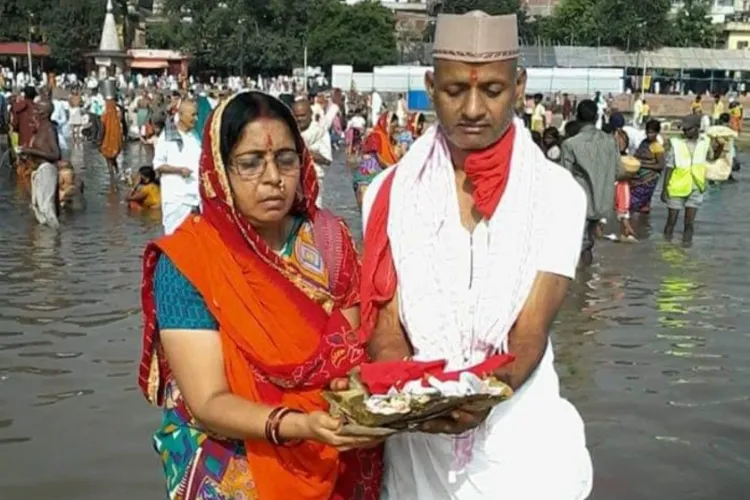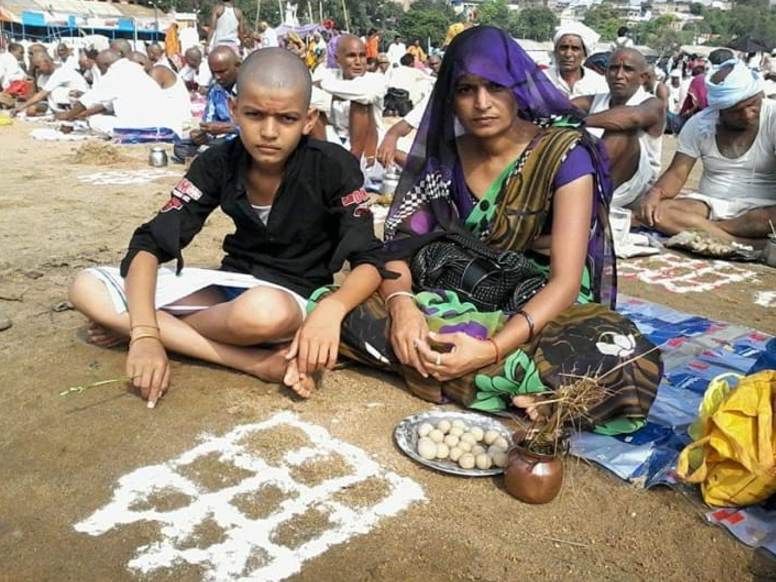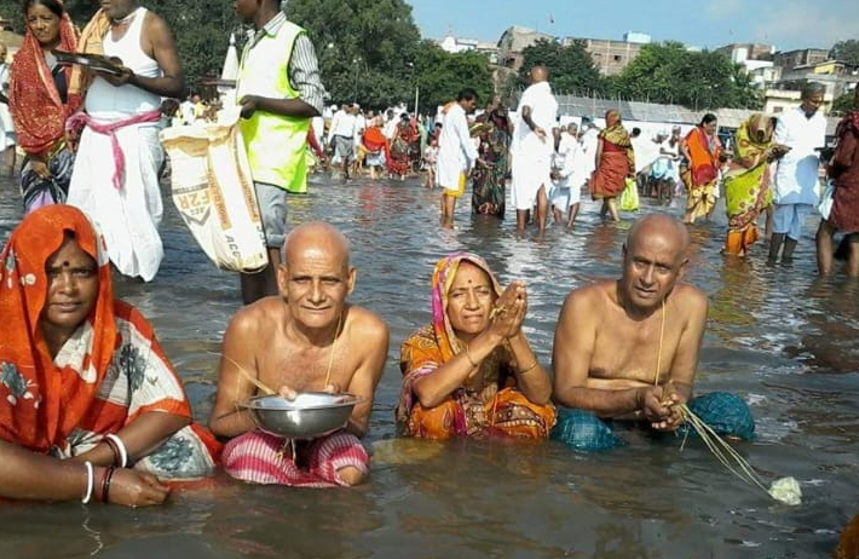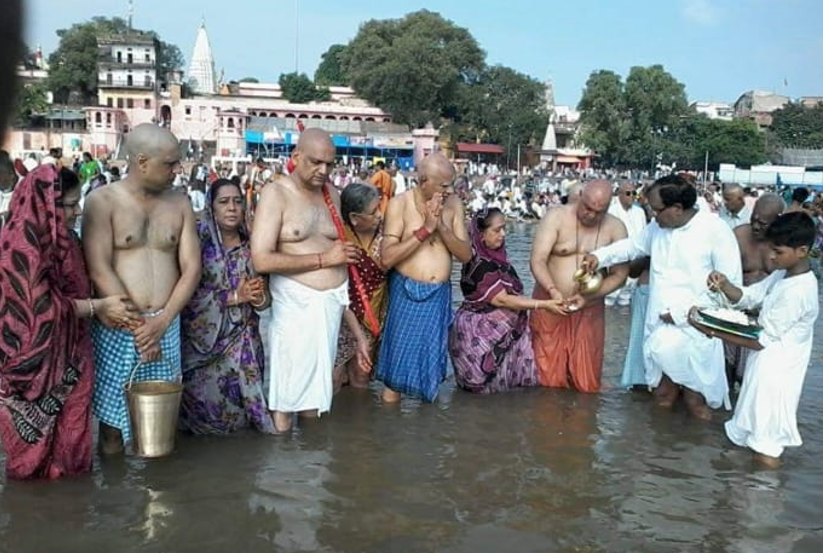
Jitendra Pushp / Gaya (Bihar)
Vishnupad temple may be forbidden for non-Hindus but the Hindus can’t do without the help of Muslims to pray for the redemption of their ancestors' souls for which they come here during the ongoing pitrupaksha (fortnight of the ancestors).
Praying and performing certain rituals for their ancestors at this temple is considered to bring moksha (salvation where a soul doesn’t have to take rebirth) to one’s ancestors.
Chhathu Bigha village is just two kilometers away from the Vishnupad temple. More than 30 acres of land- Lakhanpura to Chhathu Vigha- close to the temple supports Flower crops.

A Young boy performing the Pind-daan for his ancestors
The descendants of 62-year-old Mohammad Moinuddin, of Chhathu Vigha, have been cultivating flowers for almost three generations. Many types of flowers – jasmine, Rose, marigold, China rose, and basil plants (holy for Hindus) are grown in their fields.
Mohammad Moinuddin says that the flowers and Tulsi grown in his fields are offered in Vishnupad temple, Mangalagouri temple, and other temples of Gaya. In the Mangala Gauri temple, the flowers are used for the shringar (makeup) of Maa Mangala.
Recently, a minister in the Nitish Kumar government Mohammad Israel Mansoori was, had a dispute with Chief Minister over his visit to the temple.
Mansoori is in charge of the Gaya district and he visited the Vishnupad temple to oversee the arrangements for the pitrupaksha where lakhs of Hindus visit the temple. A section of society tried to raise this issue and also ritualistically ‘sanctified’ the temple later.

Hindu families taking a dipo in Punpun River, Gaya
However, it didn’t snowball into a major controversy.
Mohammad Moinuddin says he has no opinion on the minister’s visit and explains: “My grandfather Sajlu Mian started flower cultivation in his seven acres of land with the inspiration of Tara Guru Ji, the priest of Mangalagouri.”
Till that time he cultivated mango, guava, plum, lemon, papaya, etc. Hibiscus, locally called Odhhul was the first flower crop on the land. For eastern people, Hibiscus is meant for offering to Maa Mangala Gauri. He proudly says that the decoration and the first offering to the deity in the temple started with Hibiscus from his land in 1942.
His father Alimuddin expanded flower cultivation due to increasing demand. He added Marigold, Rose, Jasmine,, Kund and Tulsi meant for offering to Lord Vishnu. He says floriculture is a cash crop and gets good returns. Flowers are in demand throughout the year and increase manifold during the Pitrupaksha fair.

Priests helping devotees performs rituals for their ancestors
Moinuddin, 62, and his brother are carrying on the legacy and he is sure his son Rahimuddin will also do the same. He says farmworkers pick the flowers in the fields and sell them. It sustains many families.
For Hindus performing the shraddha (prayer) for their ancestors at Gaya is equivalent to a pilgrimage. The ritual involves the male heir tonsuring his head at Punpun River they come to the Vishnupad temple for pind daan (offerings).
ALSO READ: 42 percent Muslim youth are apostate: Asad Madani
Though Pitrupaksha is a great time to pray for the salvation of their ancestors, Hindus can come here anytime for the same.
